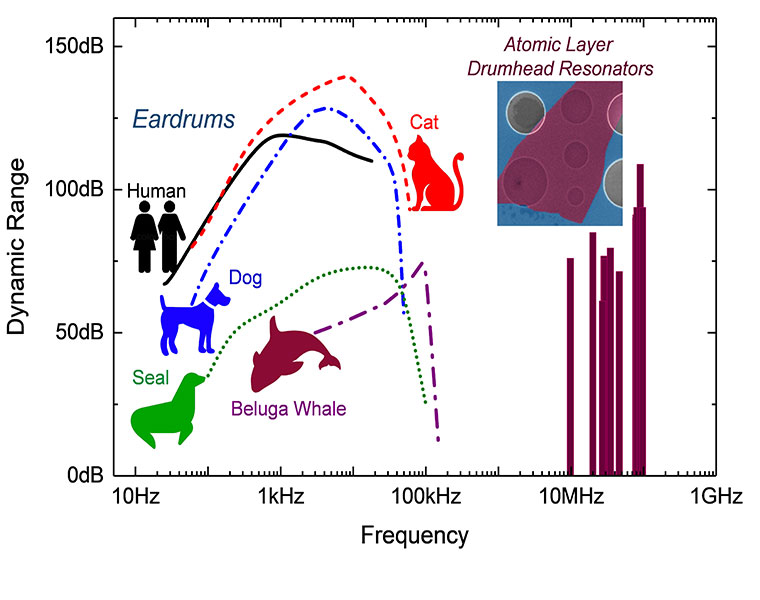US researchers have developed an electromechanical drumhead 100,000 thinner than the human eardrum, an innovation they say will make the next generation of ultra-low power communications devices smaller and able to receive and transmit a broader range of signals.
According to Philip Feng, an associate professor of electrical engineering and computer science at Case Western Reserve University, this will help meet the demand for greater levels of device miniaturisation.
“In recent decades, we have been connected with highly miniaturised devices and systems, and we have been pursuing ever-shrinking sizes for those devices,” he said.
The drumheads were constructed by exfoliating single atomic layers of molybdenum disulfide from bulk semiconductor crystals to construct single-, bi-, tri- and quad-layer flakes. They had thicknesses ranging from 0.7 to 2.8 nm, and diameters of about 1 micron.
The flakes were then suspended over microcavities on a silicon wafer and electrically connected to devices.
This resulted in resonators that are tens of trillions (10,000,000,000,000) of times smaller in volume than human eardrums, which the researchers said could be used in miniature communications transducers developed over the next decade.
Balancing dynamic range and size
Dynamic range is the ratio of the highest undistorted signal level to the lowest detectable signal level. Achieving the desired dynamic range, usually measured in decibels (dB), is key to the capabilities of animal hearing systems, as well as sophisticated engineering devices, according to Feng.
For human hearing, this is typically between 60 to 100 dB (in the range of 10Hz to 10kHz). Other animals, like cats and dogs, have similar or better dynamic ranges at higher frequencies.

In the race for smaller communications devices, one challenge has been to increase the dynamic range of detection for small radio waves and sound signals, said Feng.
“In the end, we need transducers that can handle signals without losing or compromising information at both the ‘signal ceiling’ (the highest level of an undistorted signal) and the ‘noise floor’ (the lowest detectable level),” he explained.
Feng’s research, recently published in Science Advances, reports the atomically thin electromechanical resonators have a broad dynamic range of up to 110 dB at radio frequencies as high as 120 MHz. This range has previously been achieved only by larger transducers vibrating at much lower frequencies, like our eardrums.
Using electrostatic forces, the researchers were able to stretch the drumhead membranes to tune them to different frequencies.
The ultra-small drumheads are also extremely power efficient, with the study reporting that only picoWatt to nanoWatt levels of radio frequency power are needed to keep them vibrating.
“Not only do they have surprisingly large dynamic range with such tiny volume and mass, they are also energy-efficient and very ‘quiet’ devices,” Feng said.
(Main image: Illustration of ultra-sensitive optical interrogation of the motions of drumhead-structured MoS2 resonators. [Image: Case Western Reserve University].)